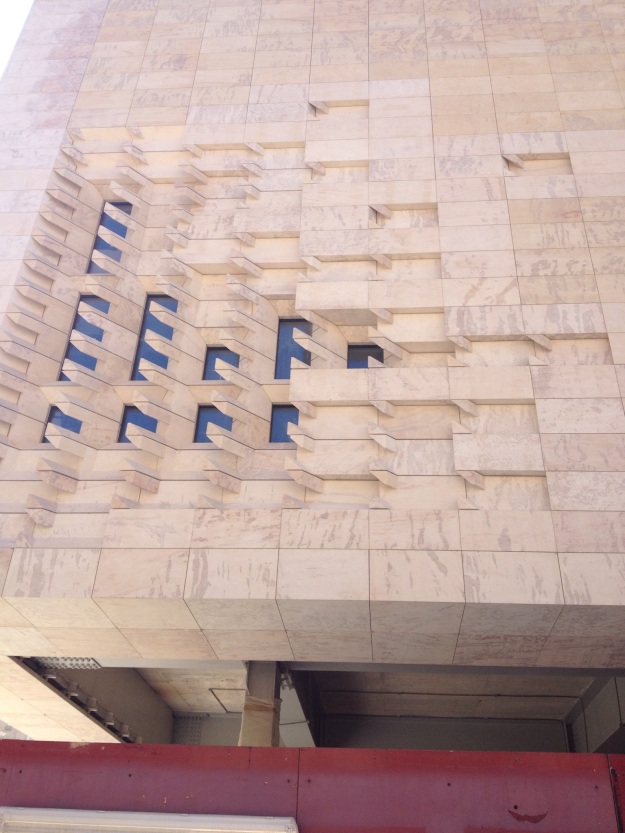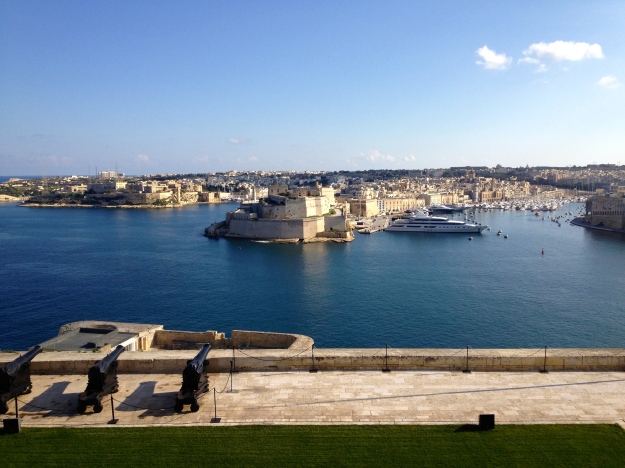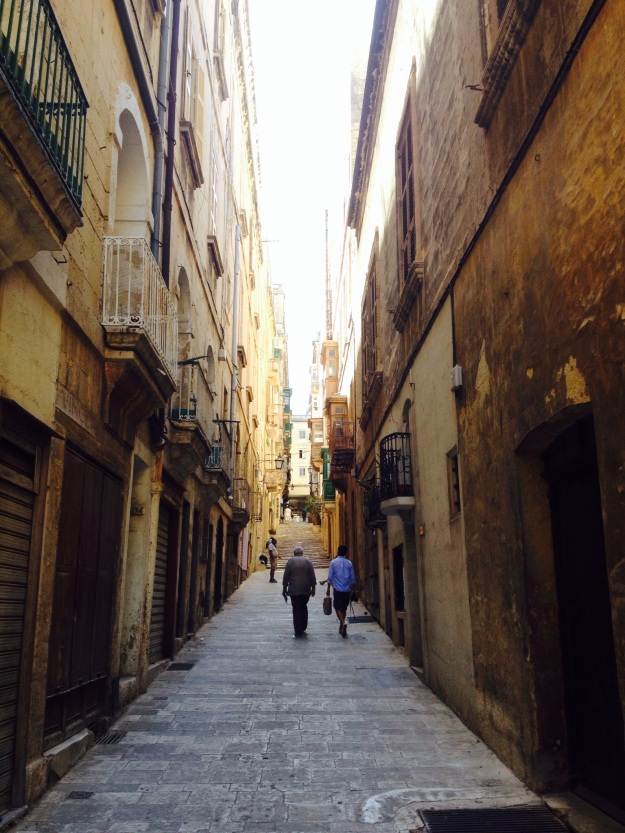
Valletta, Malta’s capital city is known by locals as il-Belt (the City in English). Walking around over the past few days with the eyes of part-insider part-tourist, I noticed that Valletta, which is undergoing heavy restoration, has never looked better.
There are a few things which I do on every visit to the island of Malta. A visit to Valletta is one of them no matter how short the visit is. Whether its to get a perfect espresso, to meet up friends or bump into people that you have not met in a while, Valletta is the perfect melting pot.
It is a city built by gentlemen for gentlemen and for many years, especially after World War II, it stood in neglect abandoned by a nation which is once again discovering its glory at all times of day.
Unlike other capital cities around the world, Valletta is a small peninsula with a population of just under 7,000 though more and more people are returning to live in what is considered as a World Heritage City.
While Valletta has always been busy during the day both with tourists and locals alike who go there for various administrative reasons, the city would fall silent after sunset as offices, museums and shops closed. But the city has been transformed over recent years and is becoming a hub of activity in the evening away from the hustle and bustle of other busier areas on the island such as Sliema/St Julians and Bugibba.
It is difficult to pinpoint the main highlights in Valletta since this is a living monument. This magnificent fortress city is named after its founder, the Grand Master of the Order of St John Jean Parisot de la Valette. It started to be built in 1566 and was completed in just 15 years with its impressive bastions, forts and cathedral.
The following are what I consider to be the 10 must sees of any visit to Valletta:

1. Renzo Piano’s city gate and the Maltese parliament: Enter Valletta from a bridge designed by world renowned architect Renzo Piano and you will be left in awe as you enter Malta’s capital city. To your right you will see the new Parliament, and further on, the site of the old opera house which was left in ruins after the second World War and which has now been turned into an open air theatre. This project, nearing completion now, has been the subject of huge political controversies over the past years. The reasons for this are varied including the fact that the Parliament was built on one of Valletta’s few squares (though it was used as a car park) and the former site of the opera house was turned into an open air theatre angering some locals who would have preferred the opera house to be rebuilt in its original state. Whether you agree with the project or its architecture, the site is now taking shape and the entrance to Valletta is incredibly stunning also in view of the heavy restoration taking place on the surrounding bastions.

2. Walk from City Gate to St George’s Square in Republic Street: A relatively short walk will take you from the City Gate to what was once called Palace Square or the President’s Palace and the Maltese Parliament. You will walk past the national archaeology museum, the side of St John’s Cathedral, the national courts, Piazza Regina where you can see the National Library which leads on to St George’s Square where you can view the Palace. You can stop for a coffee at Cafe Cordina just before you reach St George’s Square. Enter the Palace and visit its museum.
3. Visit St John’s Cathedral: No visit to Valletta is complete without a visit to St John’s Cathedral and its museum. The cathedral is a gem of Baroque art and architecture. It was built as a church for the Knights of St John. The Grand Masters and several knights donated gifts of high artistic value. The cathedral’s interior is full of works of a great Baroque artist Mattia Preti who lived in Malta from 1659 till his death in 1699. You will also find two works of Caravaggio in the museum, the beheading of Saint John the Baptist and Saint Jerome writing.

4. Walk to the Upper Barraka Gardens. On the way, view the sites of the Central Bank of Malta, the exterior of the Auberge de Castille (the Prime Minister’s Office) and the stock exchange. Turn right just after the site of the old opera house and walk up towards the Prime Minister Office (Auberge de Castille). To your right, there is the Central Bank of Malta. As you walk past the Auberge de Castille you will see the old Garrison chapel which houses the Malta Stock Exchange since 1999. From there you will walk to the Upper Barrakka Gardens (il-Barrakka ta’ Fuq) which is a public garden in Valletta with stunning views of Grand Harbour and the three cities. it is twinned to the Lower Barrakka Gardens. From here you can also head down with a new lift to the lower parts of Valletta.

5. Get lost walking in Valletta and view the main attractions at leisure: It is not easy to get lost in Valletta because the city is build like a grid and hence all roads will take you to the central street or Republic street. Nevertheless, you will get lost in time and history walking the streets of Valletta and admiring the architectural beauty and the way of living. There are many streets worth visiting including Strait Street which used to buzz with activity during World War II but has since lost its shine. Walk in Merchant’s Street with its many palazzos now serving as government buildings and head to St Paul’s Street and St Ursula Street or visit the lower parts of Valletta.
6. Visit the Manoel Theatre: Teatru Manuel, as it is known, is a historical monument and a temple to the performing arts. It was built in 1731 by order of the Grandmaster Anton Manoel de Vilhena and it remains one of the finest examples of theatre architecture in Europe. In 2014, it was voted as of the most beautiful theatres by CNN. You can take a tour of the theatre, or attend one of the many cultural events taking place there.
7. Go to the lower end (eastern side) of Valletta: Visit the Lower Barrakka Gardens and then head towards Fort St. Elmo. You will pass in front of the Mediterranean Conference Centre. This building, built in the 16th centre is one of Valletta’s landmarks. It used to be a hospital and was previously known as the Sacra Infermeria. Today it is a convention centre. Head to Fort St Elmo.
8. Visit one of the many churches of Valletta: Discover one of the many churches of Valletta. Despite its small size, (Valletta measures 900 metres by 630 metres in total) it has over 25 churches. This is a reflection of the importance of the Catholic Church in Malta over the years. Many of these churches are open during the day. If you have to pick just one (apart from St John’s Cathedral), I would make it the church of St Paul on St Paul’s Street.
9. Find St Barbara Bastions and admire the splendid views of Malta’s grand harbour with its incredibly rich history and stunning houses. If you are there during the day, you can head to Sicilia Bar for a small snack or lunch with a stunning view. If you are there in the evening, you can sit down on the stairs closeby and have a drink at the Bridge Bar.
10. Walk the perimeter of Valletta: On a cool evening or early morning, walk the perimeter of Valletta for stunning views of Marsamxett, Grand Harbour and the Valletta bastions and fortifications. This will take some time but is worth the effort.
While compiling this list, I realise how difficult it is to come up with a list of just 10 things to see in Valletta. This list stops short of many of the sites which are worth visiting. Some will point out that I have missed many important highlights such as Fort St Elmo, the war museum, the Mediterranean conference centre, St James Cavalier or the national archaeological museum, among others. But I hope that this list whets your appetite and encourages you to visit Malta’s capital which is set to be the European Capital of Culture in 2018.
Watch out for my list of 10 places to eat and drink in Valletta coming shortly.

Reblogged this on Bean Bag Travels.
Wow, these photos look stunning. Thanks for the hints. I definetly need to visit Malta (and Valletta) some day…
Many thanks. Let me know when you go for more detailed tips
I’ll come back to you 🙂
Please do 🙂